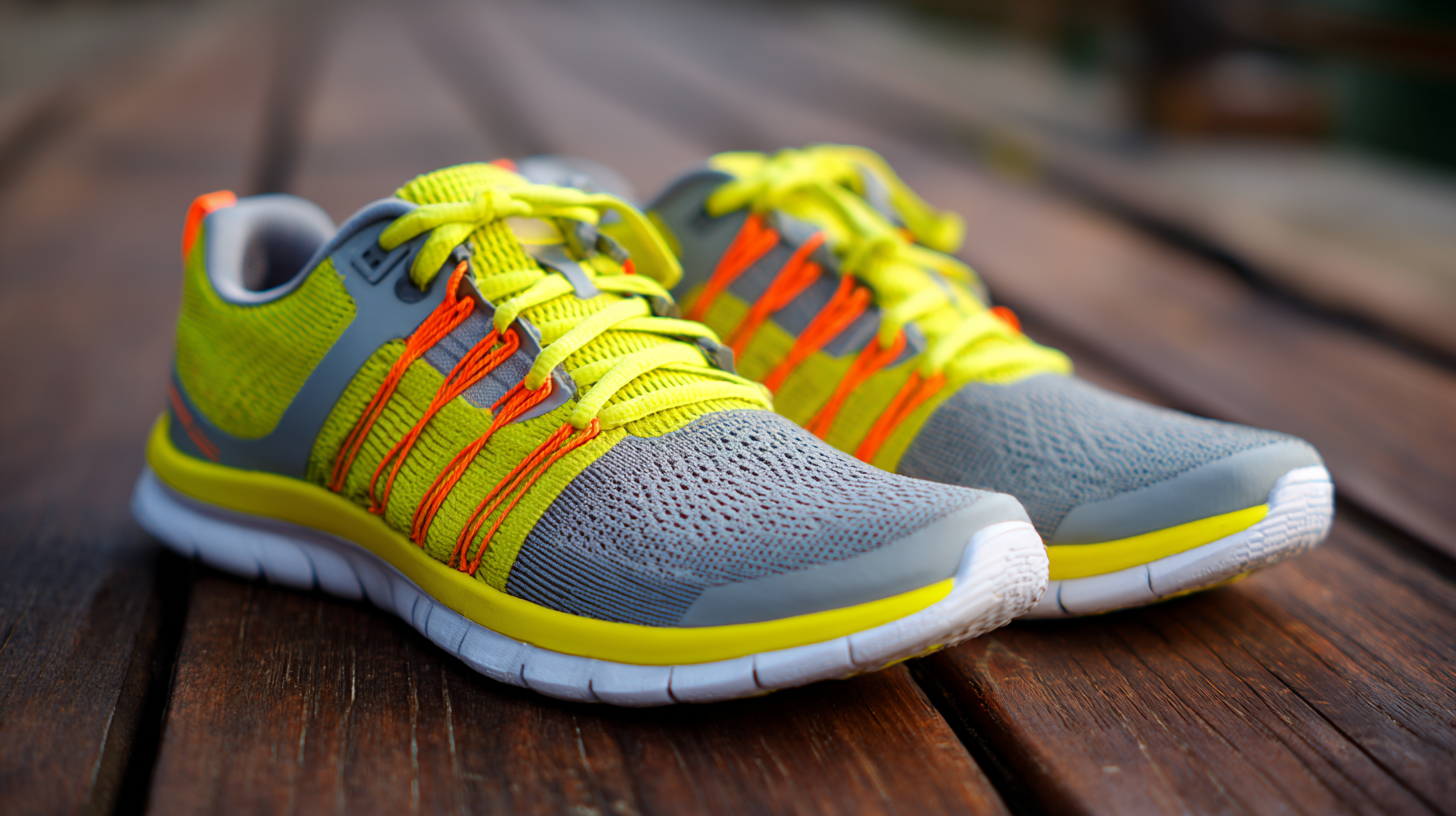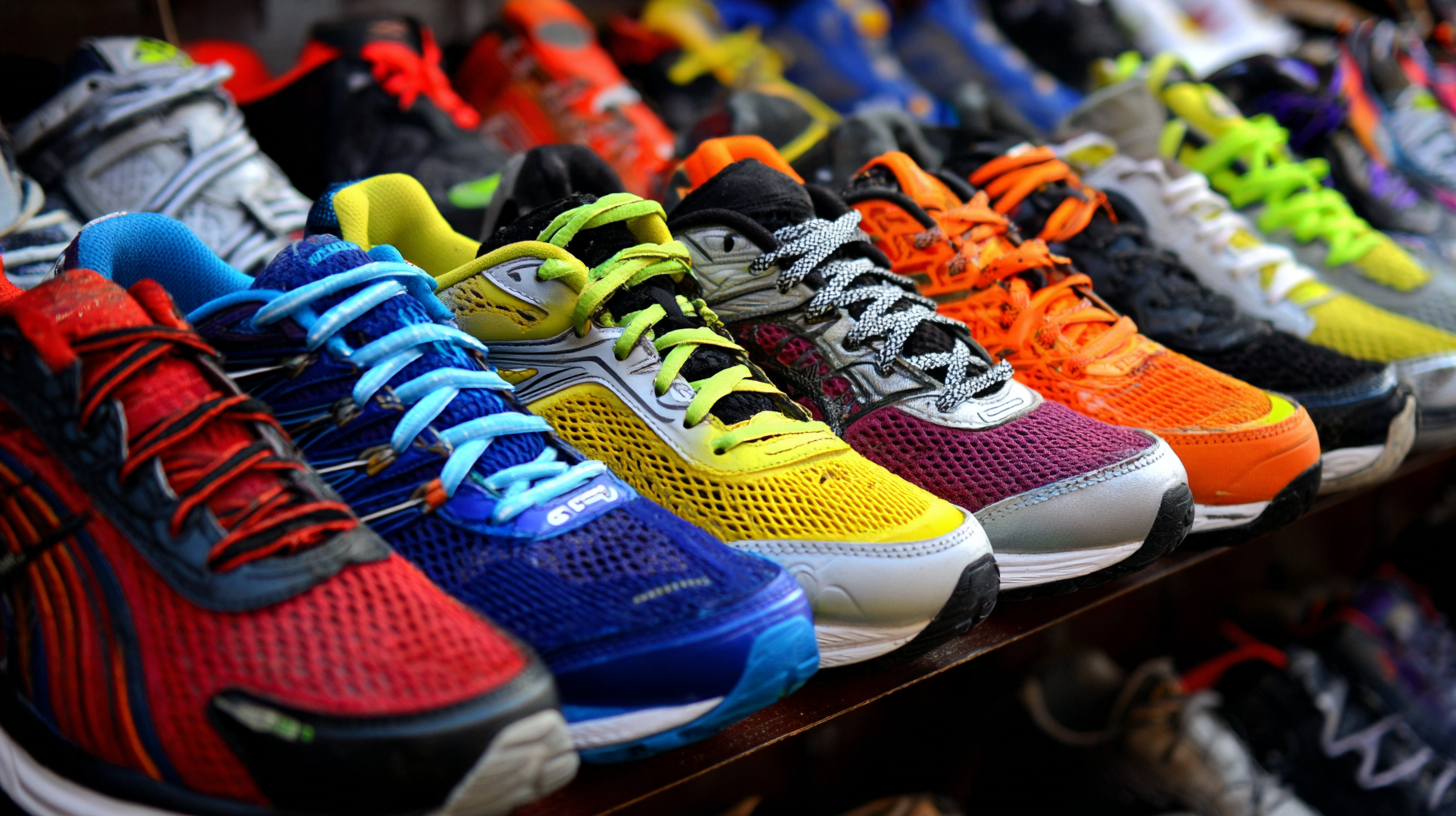In today's fast-paced fitness industry, the importance of selecting the right sports shoes cannot be overstated. According to a recent market analysis by Grand View Research, the global sports footwear market is projected to reach USD 95.14 billion by 2025, driven by increasing health awareness and a rise in sports participation across various demographics. With technology advancements in shoe design, including improvements in cushioning, support, and breathability, choosing the perfect pair of sports shoes tailored to your workout needs has become more crucial than ever. As consumers become more informed about the impact of proper footwear on performance and injury prevention, understanding the factors to consider when making a selection is essential for optimizing workouts and enhancing overall fitness experiences.

When it comes to selecting the right sports shoes, understanding your workout requirements is crucial for optimal performance and comfort. Different types of workouts, whether they are running, weightlifting, or yoga, demand distinct features from your footwear. For instance, if you are a runner, you'll want shoes that provide excellent cushioning and support to absorb the impact of each stride, while also promoting a natural foot movement. On the other hand, if you're lifting weights, stability and a flat sole might be more beneficial to ensure proper form and prevent injuries.

Additionally, consider the surface on which you frequently exercise. Trail runners will need shoes with enhanced traction and durable materials to navigate uneven terrain, while gym-goers might prioritize lightweight and breathable designs for indoor workouts. Lastly, take your personal foot shape and arch type into account; shoes that accommodate your specific foot characteristics can dramatically enhance your overall workout experience, reducing the risk of blisters and enhancing your ability to push through challenging sessions.
When selecting the best sports shoes for your workout needs, it's crucial to consider the specific features that cater to different activities. For instance, if you're into water sports, look for shoes that offer excellent drainage and non-slip soles to ensure safety on slippery surfaces. The latest models emphasize lightweight designs that provide comfort and quick-drying functionality, ideal for both casual beachgoers and serious water athletes.
For walking enthusiasts, focus on cushioning and arch support. The best walking shoes of 2025 have been tested for maximum comfort, helping to prevent fatigue during long strolls. Meanwhile, if your workouts involve high-intensity functional training like CrossFit, you need shoes that offer stability and grip to perform heavy lifts and dynamic movements safely. Flexibility combined with a robust sole will give you the edge you need for varied workouts, ensuring that your footwear supports your performance throughout. Remember, choosing the right pair significantly enhances your workout experience and prevents injury.
When selecting sports shoes for your workout, understanding the impact of material technology is crucial for both performance and comfort. Advances in shoe manufacturing have led to the development of materials that enhance durability, breathability, and cushioning. According to a 2022 report from the Sports & Fitness Industry Association, about 55% of athletes felt that the right footwear significantly improved their performance, highlighting the importance of material technology in sports shoes.
One notable advancement is the use of lightweight mesh fabrics, which allow for superior ventilation, keeping feet cool during intense workouts. Studies show that runners who wore shoes with improved breathability experienced a 15% decrease in foot fatigue. Additionally, technologies such as EVA (ethylene-vinyl acetate) foam provide enhanced shock absorption, reducing the risk of injury. An analysis by the American Academy of Podiatric Sports Medicine indicates that proper cushioning can lower the rate of common running injuries by up to 30%, emphasizing the need for athletes to invest in shoes that leverage these innovative materials for optimal performance.
This chart illustrates the impact of various material technologies on the performance aspects of sports shoes, measured on a scale of 1 to 10. Key features such as breathability, weight, durability, cushioning, and energy return play significant roles in workout comfort and effectiveness.
The evolution of sports shoes has transcended mere functionality; they embody a fashion statement and symbolize enhanced performance and a proactive lifestyle. Recent advancements in smart technology have significantly revolutionized sports shoe design, resulting in products that not only meet athletic needs but also integrate seamlessly with a tech-savvy lifestyle. According to the 2021 shoe industry development report, the footwear sector has witnessed substantial growth, driven by innovations that prioritize consumer demands for both comfort and style.
One of the key innovations transforming sports shoes is the integration of smart technologies that monitor and enhance athletic performance. Features such as built-in sensors and connectivity to mobile applications allow users to track their activity levels, analyze their performance metrics, and receive personalized coaching. Further data from industry reports highlight that manufacturers are increasingly focusing on lightweight materials and breathable designs, which have led to the creation of next-generation shoes like those featuring advanced textile technologies that provide unparalleled comfort and agility during workouts.
With the market for athletic footwear consistently expanding, companies are investing heavily in research and development to stay ahead. The emergence of lightweight spray technology, for instance, has redefined the production of sports shoes, offering runners and fitness enthusiasts a product that not only feels weightless but also enhances their overall experience. As smart technology continues to innovate, the future of sports shoe design promises to further blur the lines between performance and lifestyle, making them an essential element of any modern athlete's wardrobe.
| Category | Shoe Type | Key Features | Smart Technology | Ideal For |
|---|---|---|---|---|
| Running | Cushioning Shoes | Maximal cushioning, breathable upper | Foot pressure sensors | Long-distance runners |
| Training | Cross-Training Shoes | Multi-directional support, durable grip | Performance tracking app | Gym-goers and cross-trainers |
| Basketball | Performance Basketball Shoes | Ankle support, responsive cushioning | Jump height monitor | Basketball players |
| Walking | Comfort Walking Shoes | Lightweight, shock absorption | Step counter integration | Casual walkers |
| Lifestyle | Athleisure Shoes | Stylish, versatile comfort | Health monitoring features | Everyday wear |
As the fitness industry evolves, so does the demand for eco-friendly workout footwear. Recent industry reports indicate that the global market for sustainable sports shoes is expected to grow by 20% annually, driven by an increasing awareness of environmental issues among consumers. Companies are now prioritizing sustainable materials, such as recycled plastics and organic cotton, to create athletic shoes that not only perform well but also minimize environmental impact. For instance, brands like Adidas have made headlines with their Parley line, which incorporates recycled ocean plastic, showcasing that performance and sustainability can go hand-in-hand.

Additionally, studies show that 70% of consumers are more likely to buy products made from recycled or sustainable materials. This shift in consumer behavior is pushing manufacturers to innovate and adapt their designs accordingly. Major sports brands are investing in research to develop biodegradable components that could reduce the carbon footprint of footwear significantly. As a result, innovations like plant-based EVA foam and sustainable rubber alternatives are emerging, providing environmentally conscious options for athletes and fitness enthusiasts alike. The trend towards sustainable materials not only benefits the planet but also appeals to a growing market segment that values ethical consumption in their fitness journey.
